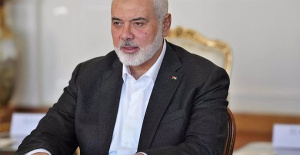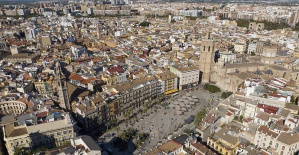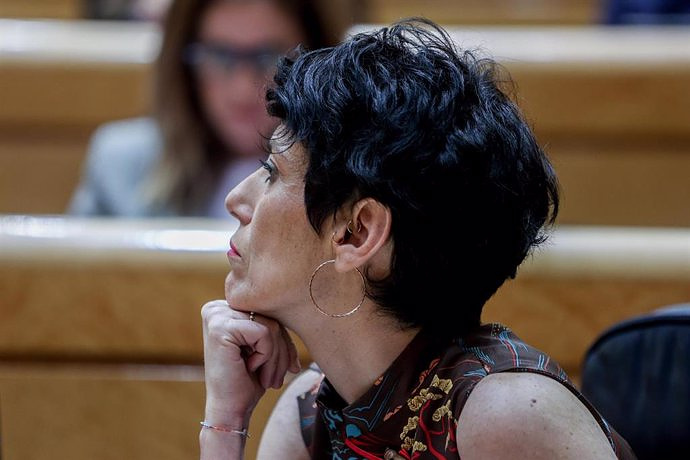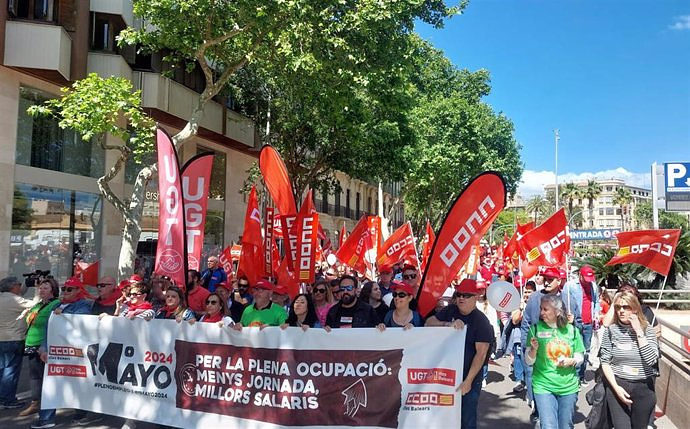Difference between police operations and International Law to defend that the land delimitation is set by the border fence
MADRID, 8 Dic. (EUROPA PRESS) -
The Government has reiterated that the so-called 'no man's land' in which the Minister of the Interior, Fernando Grande-Marlaska, located the tragedy in Melilla on June 24 refers to the "transit corridor" and that, therefore, " there is no demarcation of either of the two countries", neither of Morocco nor of Spain.
"From the police point of view, it is considered that the land delimitation is the one established by the border fence," he maintains, justifying that this is so due to operational decisions "and not so much to criteria of International Law."
"It must be indicated that the expression 'no man's land' refers to the transit corridors that exist at border crossings, in which there is no demarcation of either of the two countries," the Executive pointed out in a written parliamentary response dated on December 2 and consulted by Europa Press.
According to the Government, these types of transit corridors are "common at border crossings that exist throughout the world and respond to operational criteria for the control of documentation of people and goods that transit between states, and not so much to criteria of International Law ".
This is stated in the response to EH Bildu deputy Jon Iñarritu, very critical of Grande-Marlaska's management in the tragedy of 24-J after the head of the Interior said in his appearance in Congress in September that the deaths of migrants they happened "in no man's land". He also added later that "no tragic event" -- at least 23 sub-Saharan Africans died -- was registered in national territory.
In a previous written response, on this occasion of November 18, the Executive limited itself to replying to Iñarritu, recalling the international treaties and conventions signed during the 19th century regarding the delimitation of the borders of the autonomous cities of Ceuta and Melilla with Morocco, although avoiding clarifying its exact layout.
In this second response, the Government of Pedro Sánchez does say that "from the police point of view it is considered that the land delimitation is the one that sets the border fence." Iñarritu asked if the current situation of the billboards in Melilla coincides with the demarcation -- "not delimitation" -- according to the tenth provision of Organic Law 4/2000 on the rights and freedoms of foreigners in Spain.
"At the border crossings of Melilla there are interruptions to the fenced perimeter, existing in the same small transit corridors between Spain and Morocco, in which there is no demarcation of either of the two countries," insists the Government.
Next, the Executive goes back to the years 1988 and 2004, when construction and remodeling works were carried out in Chinatown, building "a first perimeter fence made up of two metal fences."
In 2005, he cites that the Plan of Special Measures for the security and improvement of public services in Ceuta and Melilla was launched, affecting border posts, and that other reforms were subsequently carried out due to the damages as a consequence of the Torrential rains.
Thus they arrive at 2019, with Fernando Grande-Marlaska in the Ministry of the Interior, and his plan for the "reinforcement and modernization" of border infrastructures, which has implied the elimination of concertinas and the renewal of technological means.

 Exploring Cardano: Inner Workings and Advantages of this Cryptocurrency
Exploring Cardano: Inner Workings and Advantages of this Cryptocurrency Seville.- Economy.- Innova.- STSA inaugurates its new painting and sealing hangar in San Pablo, for 18 million
Seville.- Economy.- Innova.- STSA inaugurates its new painting and sealing hangar in San Pablo, for 18 million Innova.- More than 300 volunteers join the Andalucía Compromiso Digital network in one month to facilitate access to ICT
Innova.- More than 300 volunteers join the Andalucía Compromiso Digital network in one month to facilitate access to ICT Innova.-AMP.- Ayesa acquires 51% of Sadiel, which will create new technological engineering products and expand markets
Innova.-AMP.- Ayesa acquires 51% of Sadiel, which will create new technological engineering products and expand markets Hamas views Israel's latest deal proposal in "positive spirit"
Hamas views Israel's latest deal proposal in "positive spirit" The Ibex 35 rises 0.22% mid-session driven by Aena (4.66) and Sabadell (4.57%)
The Ibex 35 rises 0.22% mid-session driven by Aena (4.66) and Sabadell (4.57%) STATEMENT: Selena Romero and Roberto Pérez winners of the 22nd Nacho Juncosa Memorial - International under-16 tennis tournament
STATEMENT: Selena Romero and Roberto Pérez winners of the 22nd Nacho Juncosa Memorial - International under-16 tennis tournament STATEMENT: DH2 Energy is the winner in the first European renewable hydrogen auction
STATEMENT: DH2 Energy is the winner in the first European renewable hydrogen auction How Blockchain in being used to shape the future
How Blockchain in being used to shape the future Not just BTC and ETH: Here Are Some More Interesting Coins Worth Focusing on
Not just BTC and ETH: Here Are Some More Interesting Coins Worth Focusing on UPV students design an app that helps improve the ventilation of homes in the face of high temperatures
UPV students design an app that helps improve the ventilation of homes in the face of high temperatures Ivace and promotes a less invasive device for the early detection of prostate cancer
Ivace and promotes a less invasive device for the early detection of prostate cancer Valencia unanimously approves the ordinance to allocate spaces to test innovative initiatives
Valencia unanimously approves the ordinance to allocate spaces to test innovative initiatives UPV researchers promote a paid master's degree as a "talent factory" in integrated photonics
UPV researchers promote a paid master's degree as a "talent factory" in integrated photonics A million people demonstrate in France against Macron's pension reform
A million people demonstrate in France against Macron's pension reform Russia launches several missiles against "critical infrastructure" in the city of Zaporizhia
Russia launches several missiles against "critical infrastructure" in the city of Zaporizhia A "procession" remembers the dead of the Calabria shipwreck as bodies continue to wash up on the shore
A "procession" remembers the dead of the Calabria shipwreck as bodies continue to wash up on the shore Prison sentences handed down for three prominent Hong Kong pro-democracy activists
Prison sentences handed down for three prominent Hong Kong pro-democracy activists ETH continues to leave trading platforms, Ethereum balance on exchanges lowest in 3 years
ETH continues to leave trading platforms, Ethereum balance on exchanges lowest in 3 years Investors invest $450 million in Consensys, Ethereum incubator now valued at $7 billion
Investors invest $450 million in Consensys, Ethereum incubator now valued at $7 billion Alchemy Integrates Ethereum L2 Product Starknet to Enhance Web3 Scalability at a Price 100x Lower Than L1 Fees
Alchemy Integrates Ethereum L2 Product Starknet to Enhance Web3 Scalability at a Price 100x Lower Than L1 Fees Mining Report: Bitcoin's Electricity Consumption Declines by 25% in Q1 2022
Mining Report: Bitcoin's Electricity Consumption Declines by 25% in Q1 2022 Oil-to-Bitcoin Mining Firm Crusoe Energy Systems Raised $505 Million
Oil-to-Bitcoin Mining Firm Crusoe Energy Systems Raised $505 Million Microbt reveals the latest Bitcoin mining rigs -- Machines produce up to 126 TH/s with custom 5nm chip design
Microbt reveals the latest Bitcoin mining rigs -- Machines produce up to 126 TH/s with custom 5nm chip design Bitcoin's Mining Difficulty Hits a Lifetime High, With More Than 90% of BTC Supply Issued
Bitcoin's Mining Difficulty Hits a Lifetime High, With More Than 90% of BTC Supply Issued The Biggest Movers are Near, EOS, and RUNE during Friday's Selloff
The Biggest Movers are Near, EOS, and RUNE during Friday's Selloff Global Markets Spooked by a Hawkish Fed and Covid, Stocks and Crypto Gain After Musk Buys Twitter
Global Markets Spooked by a Hawkish Fed and Covid, Stocks and Crypto Gain After Musk Buys Twitter Bitso to offset carbon emissions from the Trading Platform's ERC20, ETH, and BTC Transactions
Bitso to offset carbon emissions from the Trading Platform's ERC20, ETH, and BTC Transactions Draftkings Announces 2022 College Hoops NFT Selection for March Madness
Draftkings Announces 2022 College Hoops NFT Selection for March Madness



























